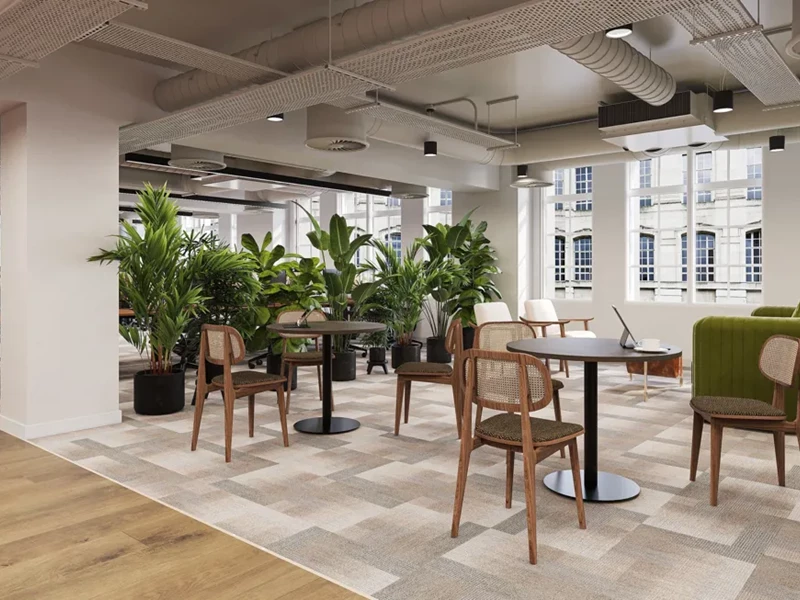While, it is clear that the short-term implications of the coronavirus pandemic will have a profound effect on the entire real estate sector, the flexible office market has found itself at the apex of those exposed due to the short term nature of contracts and a general shift across affected areas to people working remotely. We have spoken with a variety of providers from across the globe over the course of the last week to understand their position and plan as we move forward, as well as their sentiment on what the short and long term picture looks like for flexible offices.
What has been the immediate reaction?
In Europe and the US, over the last three weeks, every flexible office provider has pivoted quickly to focus on their renewal and customer retention strategy, making sure they work with their existing customers to help them through this period of uncertainty and for them to retain a level of contract occupancy (if not building occupancy). In Asia, this has been happening since the start of the year.
In our discussions to date, providers have experienced anywhere between 10 and 50% of their customers in any one building asking for some form of rent relief. What are they doing to help their customers? Well to a large extent, it depends on their own position. So far, those on a management agreement, or those that own and operate their asset, have been better placed to offer relief to their client base. Whereas those that have paid their rent this quarter, as many have, clearly find themselves with less room to help clients in the short term. Nonetheless, almost all are doing something and most are managing the extent of relief on a case-by-case basis, prioritising those businesses that are most effected, where they might ask for financial statements, and those that have a renewal in the next 6 months, and therefore there is a risk of them not renewing.
Relief to date has taken many forms and, as above, is very much dependant on the position of both parties. We have seen anything from 50% rental discount for a month, to 50% for 3 months, to a rent free deferment which is then added to the following quarter. Several providers are even offering their clients the opportunity to downsize during the period, a strategy that is proving popular with customers.
In this context, there is clearly a need for landlords to work with their operators as best possible to help them with cash flow through the period, especially those on a lease. What remains key here is that a portion of any rent that providers are “saving” must be passed over to the customer where possible in order to maintain contract occupancy, as well as likely longer term loyalty of those they have been able to help. A good example of this was in Asia, where The Executive Centre (TEC) managed to negotiate a rent relief with the landlords of many of their portfolio of 135 buildings. The savings were then passed back to their client base and as such in March they saw a ‘surge’ of renewals across their portfolio, especially as many clients didn’t want to risk moving, so it was better to renew. Their average member tenure remains 37 months.
What is the impact to contract occupancy, and as such survival?
Cash and liquidity is king. COVID-19 will likely test the business model of all providers like no other crisis before, with the simple fact that for a large portion of businesses, offices simply are not able to be used in the short term as we manage the crisis. Survival is therefore likely to come down to their business model, and what sort of shape it was in before the crisis.
It goes without saying that for the providers it is vital they keep up their liquidity through working with their landlord, and working with their customer base to retain as much income as possible. Initial signs suggested that it would be small businesses most impacted, and most likely to not renew contracts, and this may well be the case. However, in our discussions so far with the providers around the world, it has been all types of businesses seeking rent relief, and if there is any trend it is those offering a more transactional service line, and of course those in the hardest hit sectors such as travel or leisure.
We spoke about customer retention strategy earlier, but the success of this might be down to the model of the provider and what types of businesses they sign up, and, critically, on what terms. In terms of licence agreements, many clients in flexible space are on 12 month+ contracts (Workthere’s average contract is 11.9 months) and, similar to an office contract for conventional space, it is not easy to cancel contracts unless there is a material breach by one of the parties. However this term differs depending on the size of the business, and there is a general trend on size of space and length of term as our own figures below show:
- Average term length for transaction size of 5 desks or less: 9.4 months
- Average term length for transaction size of 6 – 20 desk: 11.1 months
- Average term length for transaction size of 21+ desk size: 13.2 months
Those with a higher number of smaller clients are therefore facing a higher number of renewals during this time. Those that have a higher number of clients on longer contracts, are therefore better positioned. What will be the impact of clients up for renewal not renewing? In contract occupancy terms, from those we have spoken to, including many at 95% + before the crisis, they expect to be between 70% and 85% by the end of May, worst case by the end of June for some would be 50%.
At these levels of occupancy it becomes more challenging…
Furthermore, occupancy does not solely reflect profitability, and it would be remiss of us to assume so, as much will depend on what desk rate was achieved in those contracts. The impact is therefore probably even more profound. By our calculations, providers could lose as much as 5-8% of their occupancy for each month this continues.
So what happens next?
Well this is the large unknown. Much will depend on how long it lasts. In Asia, and specifically China, providers have begun to see green shoots. Enquiry levels in March for some were not far off where they were for a normal March period. Their customers slowly returned back to the office, but with a very real change in how they were using the space. Doors to the private offices no longer always open, and the shared areas seldom used, but occupancy itself getting back closer to where it was pre-crisis.
In Europe and US, we are at a very different stage, and either nearing or in some cases at the peak of the crisis, so much is still unknown about when relative normality can return and when people might start returning to work. As I write this over the Easter weekend, it still feels very far away. The test of the business models of the providers will enter the key stage.
Looking forward, it is likely to be those providers with a higher portion of management agreements in place, as well as those who own all or part of their portfolio freehold or long leasehold, who will be in a stronger position than those tied to leases, unless they get help from their landlords, where in Asia it allowed them to better weather the storm. Those that have a higher exposure to larger and more corporate businesses and those with a strong financial backing will also be in a more resilient place to withstand the current headwinds.
What are the longer term prospects?
For all those that make it out the other side intact, the general sentiment from all those I have spoken to is positive. The flexible office market is a risk-averse solution for companies during times of uncertainty and also after. While large percentages of the working population across Europe get used to working from home during the current crisis, we will see employers big and small consider what the return to work looks like and just how much time will be spent in the office compared to at home. We expect the sector to benefit from any long term uncertainty in the future as companies accelerate their use of flexible space in their portfolio. One area many seemed to agree on was what we term, ‘the mid-cap’ companies, those with office space of between 50 and 200 people that as a result to changing how we work, may look to downsize their leased office to a more flexible space. Those with an event over the course of the next 2 years in particular, we expect will seek refuge in flexible rather than lease.
The flex market is clearly exposed in the short-term to any market impacts such as what we are witnessing with COVID-19. It is at risk from companies that are not renewing contracts as they go into survival mode. However, given its flexible nature, it is also able to react relatively quickly and adapt to make sure it meets the needs not only of existing customers, but also new ones. For now, team-work is paramount in ensuring the relationship between landlord, operator and customer continues to run smoothly when “normal life” returns. Those providers that work with their customers to help them through this time are likely to see a return of loyalty by that customer in the years ahead. The sector will bounce back from the short term pain, it might just look a little different on the other side.







